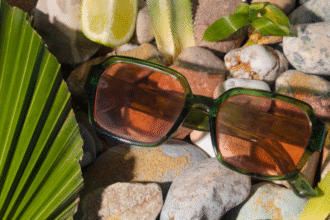Funny Japanese T Shirts: Top Viral Designs You’ll Love
In an era where personal expression is paramount, Funny Japanese T Shirts blend cultural iconography with whimsical humor, empowering wearers to showcase their identity and spark conversation. These shirts tap into global fascination with Japanese pop culture—anime, sumo imagery, ukiyo‑e reinterpretations—while offering tongue‑in‑cheek captions that range from puns to absurd narratives. As a result, they’ve become staples in streetwear, festivals, and social media feeds. Brands like Tokyo‑Tiger leverage this trend, driving revenue and community engagement through bold designs and strategic online presence.
Historical Evolution of Graphic Tees in Japan
Post‑War Beginnings
In the decades following World War II, Japan’s youth embraced Western styles—jeans, leather jackets, and graphic tees—from Occupation forces and American media. By the 1970s, souvenir T‑shirts featuring Mt. Fuji and kanji slogans appeared in tourist districts, laying the groundwork for modern “Japanese graphic tees”.
1980s–1990s: Pop‑Culture Explosion
With the rise of anime and manga, iconic characters (e.g., Astro Boy, Sailor Moon) adorned T‑shirts, sold at convention stalls and record stores. Street cultures in Harajuku and Shibuya further mainstreamed quirky prints—cartoon mascots, band logos—melding global youth trends with Japanese sensibilities.
Digital Age: Democratization of Design
The 2000s saw desktop printing and online marketplaces (Etsy, Redbubble) democratize production. Indie designers launched capsule lines, iterating rapidly based on social‑media feedback. This era birthed the “Funny Japanese T Shirts” subgenre: pun‑laden, culturally referential, often self‑deprecating apparel that thrived on viral sharing.
Defining “Funny Japanese T Shirts”
At their core, Funny Japanese T Shirts combine:
- Cultural Imagery: Kanji phrases, ukiyo‑e art, ramen bowls, station‑sign graphics.
- Humor Elements: Wordplay, puns on Japanese/English translations, absurd scenarios.
- Bold Aesthetics: High‑contrast prints, washed vintage effects, oversized fits.
Examples include:
- “Stupid Goose” — a nonchalant goose delivering deadpan humor
- “Cat Contaminated By Radiation” — a neon feline in dystopian style
- “Sashimi Rollin’ They Hatin’” — sushi meets hip‑hop parody
These designs foster community via shared inside jokes and cultural nods, making the wearer part of a global subculture.
Materials, Production & Quality
Fabric Selection
Tokyo‑Tiger uses 100 percent ring‑spun cotton or cotton‑poly blends (65/35) for softness and durability. The ring‑spun process yields a tighter yarn, preventing pilling and enhancing print clarity.
Printing Techniques
- Screen Printing: Thick, durable inks ideal for bold color—used on classic tees.
- DTG (Direct‑to‑Garment): Photo‑realistic detail on washed tees, enabling small‑batch, on‑demand runs.
- Heat Transfer: Select designs for limited releases, though less durable over many washes.
Quality Control
Each shirt undergoes:
- Pre‑print inspection: Fabric defects, sizing accuracy.
- Sample wash test: Ensures print integrity at least 50 home machine cycles.
- Final audit: Color match to original artwork, stitch validation.
Market Analysis
Global Custom & Graphic‑Tee Markets
- The global custom t‑shirt printing market reached USD 4.71 billion in 2023, with an 11.1 percent CAGR forecast through 2030.
- The global apparel market sits at USD 1,709.76 billion in 2023, growing at 4.1 percent through 2030.
- Print‑on‑demand services (major enabler) were valued at USD 6.18 billion in 2022, expanding 25.8 percent year‑over‑year.
Japan’s Domestic Scene
- Japan’s T‑shirt market grew 15 percent to USD 2.9 billion in 2024.
- Men’s apparel (including tees) is projected to reach USD 4.27 billion by 2029.
- Harajuku remains the epicenter for graphic and novelty tees, driving both tourism sales and global online interest.
U.S. & EMEA Outlook
- U.S. custom T‑shirt market at USD 857.5 million in 2023, 11.8 percent CAGR to 2030.
- Europe’s decorated‑apparel segment at USD 28.98 billion in 2023, 13 percent CAGR.
These figures underscore robust demand for personalized, culturally resonant tees like those from Tokyo‑Tiger.
Consumer Demographics & Psychographics
Age & Gender
- Core Buyers: 18–35 years (urban millennials, Gen Z).
- Secondary Segment: 36–50 years nostalgic for 80s/90s motifs.
- Gender Split: ~60 percent male, 40 percent female, though unisex fits dominate.
Interests & Behaviors
- Fans of anime, manga, and Japanese streetwear.
- Value self‑expression: 78 percent seek unique designs over mass‑market apparel.
- Purchase drivers: social‑media trends (TikTok challenges), influencer endorsements, limited‑edition drops.
Geographical Hotspots
- North America: Major sales via Amazon and direct site traffic; strong in coastal metros.
- Europe: UK, Germany, France—fashion capitals embrace novelty streetwear.
- Asia-Pacific: China, South Korea, Australia—high e‑commerce adoption fuels cross‑border buys.
Styling & Lifestyle Integration
Everyday Streetwear
Pair a Funny Japanese T Shirts piece with:
- Distressed denim or cargo pants.
- Chunky sneakers (e.g., Nike Air Force 1).
- Layered with a bomber or denim jacket.
Smart‑Casual Twist
Tuck into chinos, add loafers and a lightweight blazer for an elevated yet playful look at casual offices or creative meetups.
Festival & Travel
Coordinate multiple tees for group tours: mix “station‑sign” and “ramen‑noodle” themes for Instagram‑ready outfits.
Buying Guide & Care Instructions
Sizing & Fit
- Refer to Tokyo‑Tiger’s size chart (Japanese sizes run small—consider upsizing 1–2 sizes).
- Relaxed unisex fit suits diverse body types.
Purchase Channels
- Official Site: Best selection, flash sales, free shipping over USD 69.
- Avoid Third‑Party Scams: Reddit warns of counterfeit third‑party sites—always verify the “tokyo‑tiger.com” domain.
Care Tips
- Washing: Cold machine wash inside‑out to preserve print.
- Drying: Tumble low or air‑dry to prevent shrinkage.
- Ironing: If needed, iron inside‑out on a low setting.
Future Outlook & Innovations
AR‑Enabled Tees
Emerging augmented reality prints that unlock animations or mini‑games when scanned—Tokyo‑Tiger in R&D phase.
AI‑Driven Design
Leveraging AI to analyze social‑media trends and generate art concepts, reducing time‑to‑market for new drops.
Sustainable Expansion
Plans to introduce a fully organic line by 2026, with biodegradable packaging and carbon‑neutral shipping options.
Conclusion
Japanese shirts, particularly funny Japanese T-shirts, embody the fusion of culture, humor, and fashion innovation. With global and domestic markets thriving—USD 5.16 billion in custom-print and USD 2.9 billion in Japanese tees in 2024—personalized, playful apparel is a lasting trend. Tokyo-Tiger distinguishes itself with high-quality materials, ethical production, and savvy digital strategies. Whether you’re a streetwear enthusiast or drawn to witty, culturally rich designs, exploring Tokyo-Tiger’s collection of Japanese shirts is a must.
Ready to upgrade your wardrobe? Visit Tokyo‑Tiger for the latest “Funny Japanese T Shirts” and enjoy free worldwide shipping on orders over USD 69!
Frequently Asked Questions
What defines a “Funny Japanese T Shirts” design?
It combines Japanese cultural motifs—kanji, anime references—with humor elements like puns or absurd scenarios.
How true to size are Tokyo‑Tiger tees?
They run small; most customers recommend sizing up 1–2 sizes for a relaxed unisex fit.
.
Are the prints durable?
Yes—screen printing and DTG prints last 50+ washes if cared for (cold wash, inside‑out drying).
Where can I buy authentic Tokyo‑Tiger shirts?
Only at the official site, tokyo‑tiger.com. Beware of counterfeit third‑party sellers.
What sustainability practices does Tokyo‑Tiger follow?
They use GOTS‑certified organic cotton, water‑based eco‑inks, recycled packaging, and carbon offsets.

















